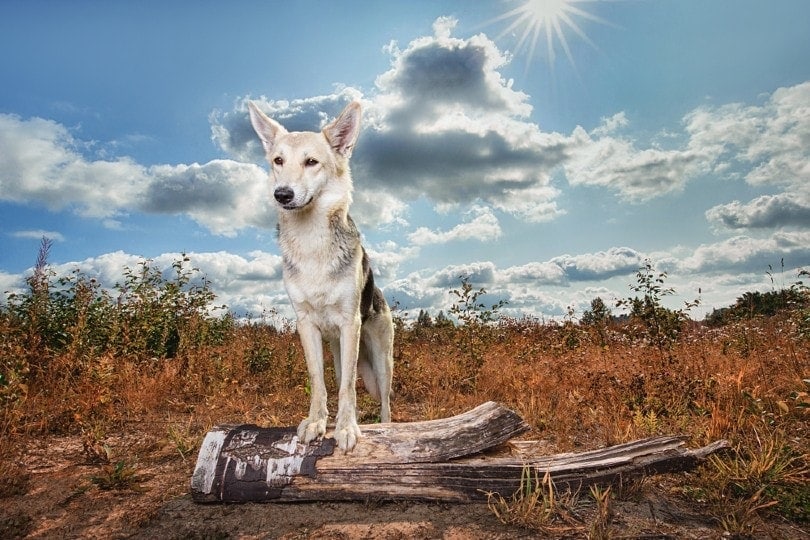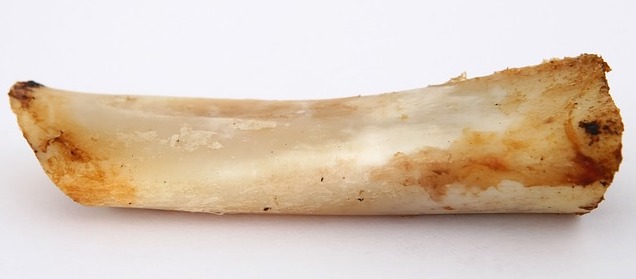How Bone Digestion Works in Dogs
Dogs share a common ancestor with wolves, and in the wild, their ancestors needed to get as much nutrition as possible from their meals. That means they might have eaten smaller bones whole and chewing bigger bones open to get anything they could out of it. Today, dog bones are common treats, and many dogs will be interested in bones they find around your home or yard.
If your dog does swallow a bone, stomach enzymes start breaking it down right away. Most of the time, it passes through the system fully within about eight to twelve hours. However, larger bones might take longer to break down. If you’re worried about your dog eating a bone that it shouldn’t have, it’s safest to watch for two days.
If your dog does pass a bone, you might see white, chalky stool, or else stool that becomes white and chalky after it dries. This is from all the extra calcium in the bone.
When your dog chews on a bone, the first danger you need to worry about is choking. Most dogs are smart enough not to swallow too big of a bone, but you should still supervise your dog around bones that might be a choking hazard.
A second, scarier danger is damage to your dog’s stomach or intestines. This is more dangerous in cooked bones and hollow bones from birds because they are more likely to break into sharp pieces. Don’t feed your dog cooked chicken bones. These bones can cause tearing or blockages in your dog’s stomach or intestines. In some cases, a large chunk of bones can also cause a blockage in your dog’s intestines.
Can Dogs Digest Bones: The Evolution of Dogs
Dogs and wolves are closely related species, so much so that for a long time, scientists thought that the former evolved from the latter. New evidence suggests a different scenario. Instead of wolves giving rise to dogs, the two species shared a common ancestor. It’s worth noting because it could explain why your pet enjoys eating bones so much.
It’s essential to consider the time in which the early wolves and dogs lived. It was indeed survival of the fittest in literally a dog-eat-dog world. Remember that early humans were competitors with these predators. That explains why animals like the Sabre-toothed Tiger didn’t survive the Ice Age. That meant that canines had to hunt successfully and get the most nutrition possible from their prey.
Domestic adult dogs require 18% protein in their diet. Some evidence suggests that they are really carnivores instead of omnivores, as many have believed. It’s logical to assume early canines would crack open the bones of their prey to get to the marrow inside them. After all, it’s loaded with fat, which could help keep an animal warm and filled with the energy to hunt again.
Of course, dogs and wolves are limited by the tools that Nature gave them, namely their teeth. Smaller bones like ribs would pose few challenges versus the large ball on the end of a moose’s femur. Even today’s wolves leave the indigestible bits behind after they take their fill. It makes sense from an evolutionary perspective that canines eat bones for the superior nutritional value they offer.

One Of These Bones Is Not Like The Other
But note that I said that dogs can digest “some” bones. And that’s because not all bones are created equally. Some bones tend to crumble when chewed, while others fracture, often yielding razor-sharp edges that can damage your dog’s digestive system.
Many of the bones found in birds, for example, are very thin, full of air sacs and easy to break. This helps them to keep their weight low and improve the lift-to-body-weight ratio. By contrast, the bones of a cows and pigs are much more massive so they can support the bulk of such large animals, who rarely fly.

Even among the bones of a single species, there is great variation. Some bones are extraordinarily dense, while others are filled with hollows and weigh practically nothing. Some have a central void that contains nutrient-rich marrow, while others carry their marrow in flatter, thinner pockets. Still other bones have no marrow at all.
A couple of factors determine how well your dog will digest a given bone.
Thousands of dog owners give their pup bones each year. Most probably digest the bones without problem. But this does not mean that bad things don’t happen, because they are far too common.
Starting from the point of entry, let’s examine some of the problems that can occur after offering your dog a bone:
What should I do if my dog ate a rib bone?
I’ve worked with hundreds of different animal species over the years, and I’ve seen an unfortunate number of medical emergencies during this time.
While just about any acute health problem can cause anxiety for both the pet and its owner, choking represents an especially terrifying event, regardless of whether you are talking about lizards, cats or fish.
Unfortunately, many dogs suffer through this type of horror each year, and the offending item is often a bone.
I can already hear the pushback. Many people have fed their dog bones and have done so without any problem. It’s part of our culture – why do you think we call them “doggie bags?”
Giving your dog a bone almost always results in a happy pup, but this does not mean the practice is safe. After all, most sky divers survive their plunge from a plane, but this hardly makes the activity “safe.” The fact is, while your dog adores them, bones are a high-risk snack for dogs.
Given that the only upside to the practice is a few moments of tail-wagging and lip-smacking (which can easily be achieved with some good ‘ol fashioned haunch scratching and a carrot or other healthy and safe treat), the risk-reward algebra suggests that bones shouldn’t be given to dogs.
It’s difficult to find reliable statistics that track the number of choking-related fatalities that occur each year, but it isn’t hard to find accounts from veterinarians who have seen the problem all too often. In fact, some claim that “bones…are the most common type of foreign body found in the esophagus.”